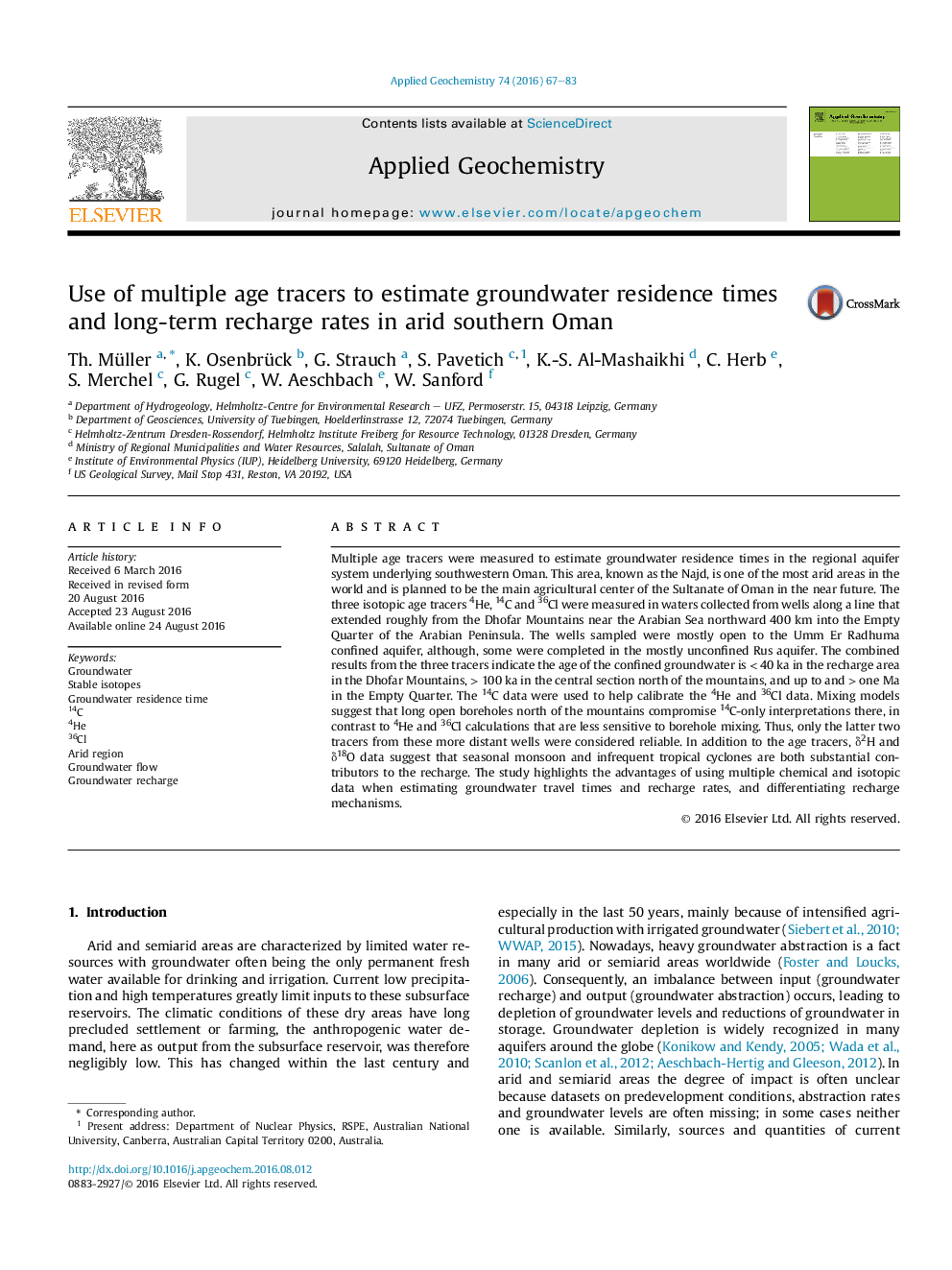| کد مقاله | کد نشریه | سال انتشار | مقاله انگلیسی | نسخه تمام متن |
|---|---|---|---|---|
| 4435530 | 1620217 | 2016 | 17 صفحه PDF | دانلود رایگان |
• Multiple age tracers are required for the interpretation of the groundwater system.
• Different tracers are applicable along different sections of the flowpath.
• Groundwater residence times >1 Ma have been determined for the northern Najd area.
Multiple age tracers were measured to estimate groundwater residence times in the regional aquifer system underlying southwestern Oman. This area, known as the Najd, is one of the most arid areas in the world and is planned to be the main agricultural center of the Sultanate of Oman in the near future. The three isotopic age tracers 4He, 14C and 36Cl were measured in waters collected from wells along a line that extended roughly from the Dhofar Mountains near the Arabian Sea northward 400 km into the Empty Quarter of the Arabian Peninsula. The wells sampled were mostly open to the Umm Er Radhuma confined aquifer, although, some were completed in the mostly unconfined Rus aquifer. The combined results from the three tracers indicate the age of the confined groundwater is < 40 ka in the recharge area in the Dhofar Mountains, > 100 ka in the central section north of the mountains, and up to and > one Ma in the Empty Quarter. The 14C data were used to help calibrate the 4He and 36Cl data. Mixing models suggest that long open boreholes north of the mountains compromise 14C-only interpretations there, in contrast to 4He and 36Cl calculations that are less sensitive to borehole mixing. Thus, only the latter two tracers from these more distant wells were considered reliable. In addition to the age tracers, δ2H and δ18O data suggest that seasonal monsoon and infrequent tropical cyclones are both substantial contributors to the recharge. The study highlights the advantages of using multiple chemical and isotopic data when estimating groundwater travel times and recharge rates, and differentiating recharge mechanisms.
Figure optionsDownload as PowerPoint slide
Journal: Applied Geochemistry - Volume 74, November 2016, Pages 67–83
